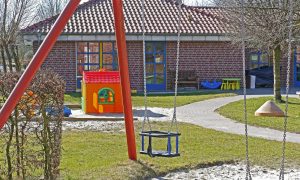In order to provide for their families, many parents must go to work while leaving their children in someone else’s care. This is often a difficult decision, and parents worry whether placing a child in a care setting other than the home with have negative effects on their child’s future. Studies by the National Institute of Child Health and Human Development have been measuring the impacts of regular child care for many years.
Understanding the Quality of Care
While there are many factors that parents use to choose caregivers for their children, the quality of care is an important priority. Parents should ask questions about the size of each class group and the adult-to-child ratio. They may also want to consider the level of education of the caregivers at the facility. A quality daycare center will provide a stimulating environment for children with early education opportunities. When group sizes are smaller and the adult-to-child ratio is higher, there are more chances to observe and correct behavioral problems.
Academic Benefits of High-Quality Care
Children who are cared for in high-quality centers often have some academic advantages as they head off to school. They are already used to working in cooperation with others and have a better understanding of social rules and structure. In addition, many high-quality centers teach early reading skills and basic mathematics as part of their program. Children from these centers enter grade school with higher reading abilities and advanced vocabularies.
Behavioral Impacts of Daycare
In terms of grade school behavior, the NICHD study showed that children in out-of-home care settings had a higher risk of behavioral issues. While many facilities try to establish proper behavioral guidelines, it is also possible for children to pick up bad habits. Daily care can also be stressful for toddlers which can cause them to act out. With their limited vocabulary, it is not unusual for biting to be an issue, and many facilities keep a daycare biting log to work through this problem. Most children have outgrown the biting phase by the time they get to grade school. In fact, levels of behavioral issues tend to even out as children get further into their grade school careers.
The Effects of the Amount Time Spent in Care Centers
The number of hours per week that a child spends in a care facility is another factor that can have an impact on his or her grade school performance. Children who spend more than 30 hours each week in a care setting do not have a significant academic advantage over those who spend 10 hours or less. However, longer periods of care can lead to an increased risk of behavioral issues in the future.
The Physical Effects of Out-of-Home Care
While staying at a childcare facility, children are more prone to pick up stomach bugs and other viral illnesses. It has been suggested that this early exposure may strengthen the immune systems of these children in the long run. However, one of the most important impacts on grade school children is the power of early education programs about health issues. When children learn about the importance of a healthy diet and exercise at a young age, they are more likely to carry those values into the future.
The choice to place a child in a care facility may not be easy, but it is often necessary. Parents should take some time in making this important decision. By seeking high-quality daycare centers, they can help their children have a positive experience that prepares them for grade school.











No Comments